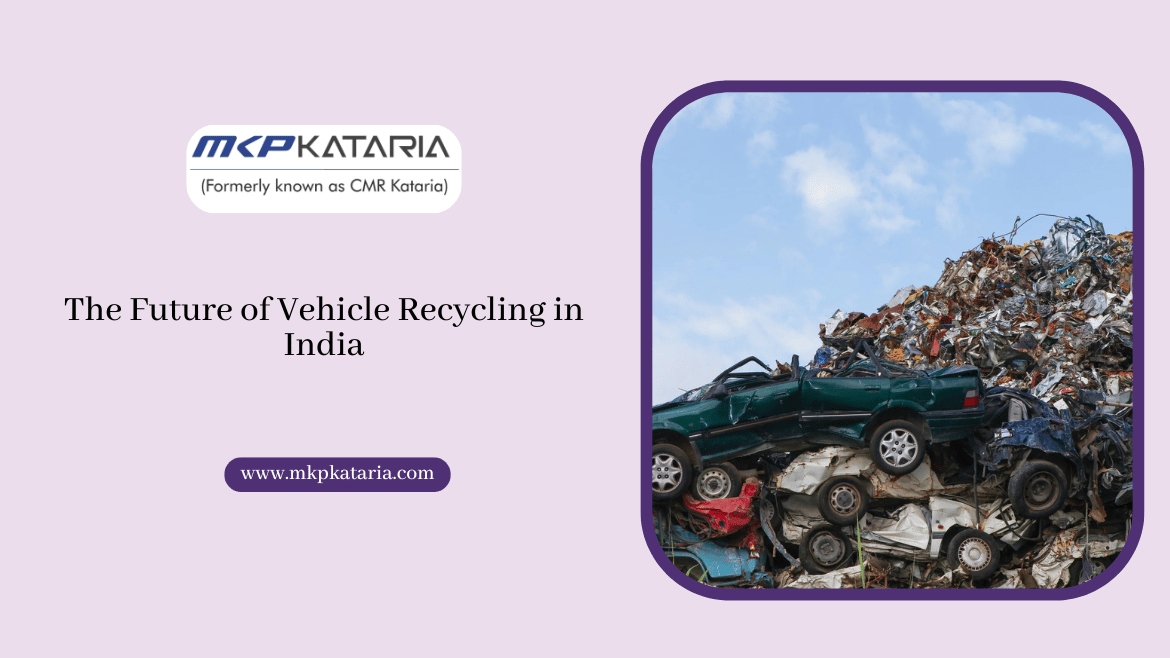As India strides into a new era of sustainable development and environmental consciousness, vehicle recycling is rapidly emerging as a key solution to managing the country’s growing automotive waste. With over 10 million vehicles reaching the end of their life every year, India is now recognizing the vast potential and necessity of structured, efficient and listed vehicle scrapping companies in India as well as recycling programs.
This article explores the future of vehicle recycling in India, highlighting trends, government policies, challenges, opportunities, and the way forward for a greener automotive ecosystem.
Understanding Vehicle Recycling
Vehicle recycling is the process of dismantling and recovering reusable and recyclable components from old, damaged, or end-of-life vehicles (ELVs). These components include steel, aluminum, plastic, rubber, batteries, tires, and electronic parts.
Globally, vehicle recycling is a mature industry contributing to sustainability by reducing landfill waste, conserving raw materials, and minimizing pollution. In India, however, this industry has traditionally been unorganized, dominated by small-scale, informal scrap yards operating with outdated and unsafe practices. But things are changing now.
The Turning Point: India’s Vehicle Scrappage Policy
A major game-changer for the future of vehicle recycling in India was the launch of the Vehicle Scrappage Policy in 2021. Aimed at phasing out old, polluting, and unsafe vehicles, this policy provides a framework for identifying ELVs and encourages their safe, eco-friendly recycling.
Key highlights of the policy include:
- Mandatory fitness tests for commercial vehicles older than 15 years and private vehicles older than 20 years.
- Disincentives such as higher re-registration fees and green taxes for vehicles failing the fitness tests.
- Incentives like tax rebates, discounts on new vehicles, and waivers on registration fees for those who scrap old vehicles voluntarily.
- Development of Registered Vehicle Scrapping Facilities (RVSFs) across the country.
Emerging Trends in the Indian Vehicle Recycling Sector
- Rise of Authorized Scrapping Centers
Private companies are now entering the vehicle recycling sector, setting up RVSFs with advanced machinery and environmentally compliant practices. Companies like Tata Motors, Maruti Suzuki, and Mahindra have announced large-scale investments in vehicle recycling infrastructure.
- Technology-Driven Dismantling Processes
Automation, robotics, and AI are beginning to play a role in dismantling operations. These technologies improve efficiency, safety, and accuracy in identifying reusable components and hazardous materials.
- Circular Economy Integration
Recycled materials like steel, plastic, and rubber are being reintegrated into the manufacturing cycle, supporting a circular economy. This reduces the dependence on virgin raw materials and lowers carbon emissions.
- Eco-Friendly Disposal of Hazardous Waste
Modern recycling centers ensure the safe disposal or reprocessing of pollutants like engine oil, brake fluids, and lead-acid batteries, which were earlier discarded irresponsibly in the informal sector.
Benefits of Structured Vehicle Recycling in India
- Environmental Protection
Proper scrapping via car scrap dealers in Ahmedabad reduces pollution, cuts down on illegal dumping, and prevents the release of toxic materials into soil and water sources.
- Resource Conservation
Recycling reduces the need for raw materials like iron ore and bauxite, helping conserve natural resources.
- Economic Growth
The scrappage ecosystem will attract investments, boost steel and auto industries, and create an estimated 35,000 direct jobs and 100,000 indirect jobs.
- Road Safety
Phasing out older, unsafe vehicles contributes to fewer accidents and better road safety.
Future Challenges
Despite the promise, several hurdles still need to be addressed:
- Public Awareness: Many vehicle owners are still unaware of the scrappage policy or its benefits.
- Incentive Gaps: Financial incentives for scrapping are currently limited and not uniform across states.
- Infrastructure: India needs a much larger network of RVSFs to handle the projected volume of ELVs.
- Informal Sector Resistance: The traditional scrapping industry may resist the transition due to lack of resources and fear of losing livelihoods.
The Way Forward
To unlock the full potential of vehicle recycling, India needs a multi-pronged approach:
- Policy Refinement and Enforcement: Strengthen regulations, ensure implementation across states, and offer better financial incentives.
- Public Education Campaigns: Inform vehicle owners about the benefits of scraping through digital, print, and social media.
- Private Sector Collaboration: Encourage public-private partnerships to bring innovation and capital into the recycling industry.
- Skill Development: Train workers for modern recycling practices to facilitate a smooth transition from the informal to the formal sector.
- Digital Tracking of ELVs: Use vehicle registration databases to track and notify owners of ELVs due for scrapping.
Conclusion
The future of vehicle recycling in India is bright, promising, and critically important. As India moves toward becoming a global hub for clean technology and sustainable development, organized vehicle recycling can play a central role in transforming waste into wealth.
With proactive governance, industry collaboration, and public participation, India can not only manage its growing automotive waste but also set a global example in sustainable vehicle lifecycle management.






Like to know how no metallic parts removed from ELVs are recycled to ensure they are disposed responsibly and not dumped with urban waste- ex- seats, tyres, wind shields, etc…